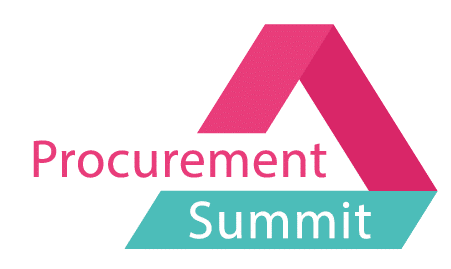inorder Dokumentation
inorder integriert sich nahtlos in die IT-Landschaft und ergänzt diese durch eine intuitive Oberfläche.
Nutzen und Verwalten der Katalogproduktfunktion
Die Produkt-Kataloge können auf Nutzer- oder Nutzergruppenebene individuell angepasst werden. So erhalten ausgewählte Abteilungen oder Nutzer, Zugriffe auf definierte Lieferantenkataloge. Auch angefragte und ausgeschriebene Dienstleistungen oder Produkte können in das Katalogsystem aufgenommen werden.
Dies gilt auch für die Freitextprodukte. Kataloge können manuell oder per Datenimport gefüllt werden. Die Anbindung von Lieferantenkatalogen kann nach Absprache vom Auftragnehmer übernommen und in das Angebot aufgenommen werden.
Dieser Vorgang kann auch durch den Auftraggeber über das Backend durchgeführt werden. Preisupdates über Importe müssen von Einkäufern freigegeben werden. Der Auftraggeber erhält eine Übersicht über abweichende Preise.
Nutzen und Verwalten der Freitextproduktfunktion
Freitextprodukte und Dienstleistungen können einfach angelegt werden. Anhänge, wie zum Beispiel Angebote können einfach hochgeladen und hinterlegt werden. Einkäufer haben im Backend die Möglichkeit, Anpassungen an Preis und Produktdetails vorzunehmen.
Freitextpositionen können auf Wunsch immer erst dem Einkauf zugespielt werden, damit der Einkauf Bedarfe bei den gewünschten Lieferanten bündeln kann.
Punchout Katalogfunktion
Es können bis zu drei Punchoutkataloge mit angebunden werden. Weitere Anbindungen sind nach Absprache möglich, aber nicht Teil des Angebots.
Integration der Lieferantenanbindung
Der Auftraggeber sendet Anforderungen (Bestellungen) nach erfolgter Freigabe direkt und ohne Medienbruch per Schnittstelle zum Lieferanten. Sofern keine EDI-Anbindung umgesetzt werden kann, können Bestellungen auch per Mail als PDF versendet werden.
Integration der Freigabeworkflows
Der Freigabe-Workflow des Auftraggebers wird durch inorder in die digitale Welt übersetzt. Durch den individualisierbaren Freigabeworkflow werden Anforderungen schneller und sicherer bearbeitet.
Über einen digitalisierten Freigabe-Workflow geht der Auftraggeber sicher, dass alle Compliance Guidelines eingehalten werden. Vorgesetzte und Einkäufer können mit einem Klick im System oder in einer Anforderungs-Mail die Anforderungen freigegeben.
Lieferantenverwaltungsfunktion
Über die Lieferantenverwaltung können Stammdatensätze direkt bearbeitet werden. Außerdem können Bestellungen und bestellabhängige Daten zu einem oder mehreren Lieferanten ausgewertet werden.
Kontierungsfunktion der Anforderungen (Warengruppen, Kostenstellen, Sachkonten, Projekte):
inorder integriert bestehende Kontierungen des Auftraggebers, die im Bestellprozess teilweise automatisch zugeordnet werden können.
Kontierungsfunktion der Anforderungen (Warengruppen, Kostenstellen, Sachkonten, Projekte):
inorder integriert bestehende Kontierungen des Auftraggebers, die im Bestellprozess teilweise automatisch zugeordnet werden können.
Vertreterregelungenfunktion
Ein Nutzer der jemanden vertreten soll kann ernannt werden und kann ohne Passwort des jeweiligen Nutzers die Rollenrechte annehmen und im Namen des Nutzers inorder benutzen.
Bestellverwaltungsfunktion
Einkäufer haben eine Übersicht über alle Bestellungen. In der Bestellverwaltung können Einkäufer Informationen einer Bestellung einsehen. Die Mitarbeiter (Anforderer) und Manager sehen im Frontend lediglich den Bestellstatus und den Status ihrer eigenen Anforderungen.
Erstellung eines Bestelltemplate als PDF nach Vorgabe
Wareneingangsfunktion
Die Wareneingangsbuchungen werden direkt vom Anforderer vorgenommen. Es können Teilmengen gebucht und abgeschlossen werden. Sollte hierbei ein Fehler passieren, kann der zuständige Einkäufer das Endlieferkennzeichen wieder löschen und die Position somit wieder öffnen.
eCl@ss Mappping-Matrix zu Warengruppen
Das Mapping zwischen Produkten und Sachkonten wird standardmäßig über ein eClass Mapping umgesetzt.
Produktverwaltungsfunktion
Produkte und Dienstleistungen können über das Backend verwaltet werden. Dies bezieht sich vor allem auf das Einstellen und Ändern von Produktdaten.
Multi-Mandantenfähigkeit
Der Auftraggeber hat die Möglichkeit alle Unternehmen seiner Gruppe in einer inorder-Installation zu verwalten. Unabhängig davon, welche ERP-Systeme in den Tochterunternehmen eingesetzt werden.
Auswertungsfunktionen aller Daten die über inorder zur Verfügung stehen
Schnittstelle zum ERP
Schnittstelle zu Active Directory
Konfiguration der Nutzer- und Rollenrechte
Konfiguration der Bestell- und Anforderungsformulare
Es können Formulare angebunden werden
Sprachen
Anpassung der Unternehmenssprache in Deutsch. Das Grundsystem beherrscht 11 unterschiedliche Sprachen.
Auftragsbestätigungen
Die Lieferanten haben die Möglichkeit eine elektronische Auftragsbestätigung (AB) per Mail zurück an das Bestellsystem zu senden, wenn der Betreff einen vorher erzeugten Token (z.B. die Auftragsnummer) enthält.
Die AB wird der Bestellung im Backend beigefügt und der Status der Bestellung wird verändert.
Echtzeitanalysen
Erhalten Sie datengetriebene Antworten auf Ihre Fragen in Echtzeit.
verbunden
Das ERP-System (SAP, Dynamics, etc.) oder andere Systeme lassen sich nahtlos verbinden.
zuverlässig & schnell
Daten werden per Schnittstelle übertragen und sind so resistent gegen Falscheingaben.
Bekannt durch:








33% der CPOs glauben daran, dass ihre Digitalstrategie es ihnen ermöglichen wird, ihre Ziele zu erreichen.

zufriedene Nutzer
Neugierig geworden?
Der erste Schritt für eine Zusammenarbeit
Gemeinsam machen wir den Einkauf so einfach wie Onlineshopping.
Der erste Schritt für eine Zusammenarbeit
Gemeinsam machen wir den Einkauf so einfach wie Onlineshopping.
